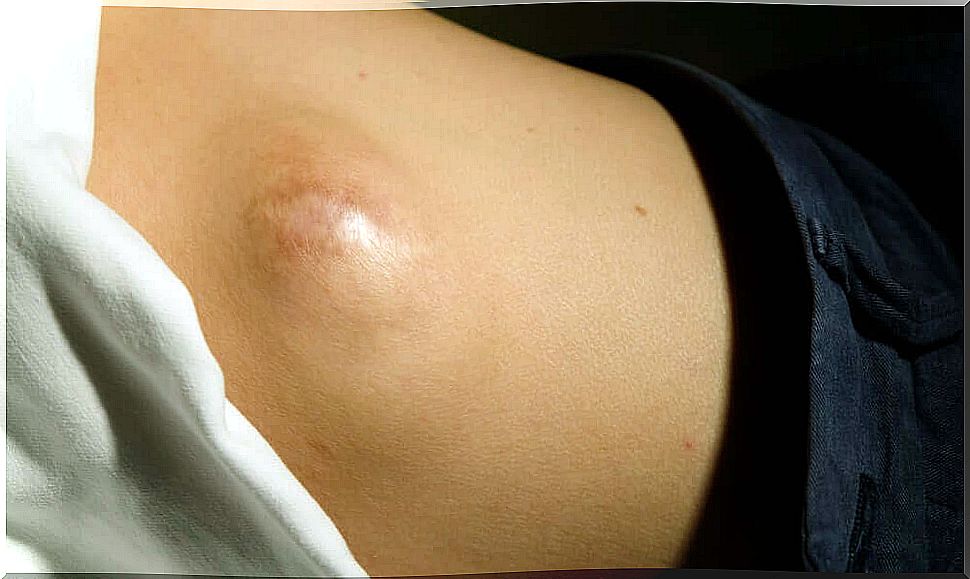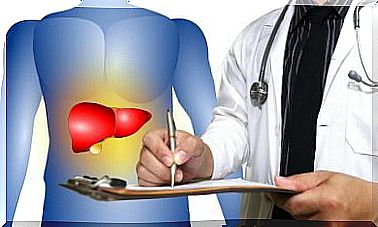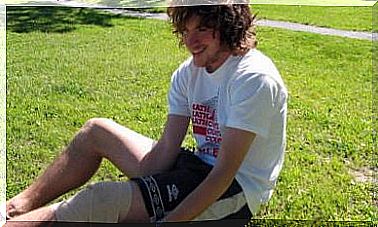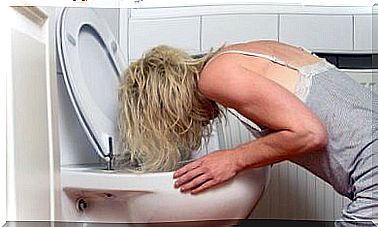Back Fat Nodules: Everything You Need To Know

The discovery of fatty lumps on the back causes concern for the person who finds them. Sometimes it is not just one, but a bigger one who is accompanied by other smaller ones, and this arouses even more apprehension.
In any case, it is important to establish a differential diagnosis of the nodule. That is, although it may look like a lump of fat, it could be another pathology, such as a sebaceous cyst or boil.
While it’s true that fat is the most frequent cause of this symptom, it doesn’t hurt to schedule a doctor’s appointment to establish what it really is. Sometimes, clinical examination is sufficient to determine the origin of the nodule, without the need for further studies.
Specifically, an accumulation of fat in the skin is called a lipoma. The name refers to their formation, which consists of adipocytes – cells with lipids.
Lipomas are not malignant and are usually limited to a size that does not affect other structures in the body. However, there are cases of giant lipomas and internal lipomas that can lead to unexpected complications, to the point of interrupting the functioning of other organs.
Differential diagnosis of back fat nodules
As anticipated, the existence of a fatty lump in the back requires a differential diagnosis. We have to assess whether we are dealing with a lipoma or other skin lesion with similar symptoms. Below, we’ll detail the three most common.

1. Lipoma
This is the classic fat nodule. Its growth is slow, progressive, and becomes evident when the patient discovers it, sometimes by accident. It’s not painful and reaches a point of balance where it stops growing – with the exceptions we’ve mentioned. If it’s small, doctors generally recommend doing nothing. If it is large or aesthetically uncomfortable, it is removed with local surgery.
2. Boil
A boil is an infection of the hair follicle. It can appear on the back, especially in the lower area, where there is a greater presence of hair. Sometimes it hurts, and sometimes it doesn’t. Pain is often associated with an infection.
If there is infection, there is presence of pus that makes pressure to leave; this is a difference from lipoma, which has no secretions. Treatment of a boil consists of using antibiotics if infection is present, drainage if pus is present, and local washes with antiseptics.
3. Sebaceous cyst
This lesion is very similar to lipomas in its composition, as it has fat inside. The histological difference is that it has a cyst lining and some fluid inside. It almost never hurts, but it can get infected, like boils.
It is mobile to the touch and even sinks a little under pressure. Like a lipoma, treatment is based on the size and discomfort it causes; if removal is necessary, local surgery is performed.
Symptoms and risk factors
A fat lump or lipoma is common on the back, although it can also appear on the upper limbs and neck. It’s strange to see them on the lower limbs.
When touched, the lipoma has a certain mobility and softness. Under pressure, it may sink minimally, but it is not liquid like a cyst, so it offers some resistance to palpation. It is usually easy for the doctor to identify it, as the touch is characteristic.
The size of the fat nodules does not exceed 4-5 centimeters in the vast majority of cases. If it is larger, we have already talked about a giant lipoma, which will require a different approach, as it penetrates deeper structures and its removal is not as easy as in other cases.
The origin of lipomas is not exactly known. There is supposed to be some kind of genetic factor, since chunks of fat appear repeatedly in family groups with this tendency. However, there are no conclusive studies in this regard.
Regarding age, the most affected group is adults, between 30 and 60 years old. There is also no clear information on why it is distributed this way.

How to identify a back fat lump?
A medical appointment should be scheduled when detecting a fat lump in the back, so that the differential diagnosis can be made. The doctor will be able to quickly distinguish whether it is a lipoma or another type of formation. Likewise, he will indicate treatment methods based on severity.
Some additional symptoms alert you to the need to consult more quickly, such as:
- Nodule size increase
- Presence of pus that comes out
- Hardening of the supposed lipoma with loss of mobility and smoothness
- Swollen glands near the affected region
Pay attention to fat nodules
Although benign, lipomas do require attention. It is better to see a doctor and obtain a differential diagnosis than to be in doubt, especially if these are associated with symptoms that cause suspicion of infection, compression of nearby structures, or increase in size.








